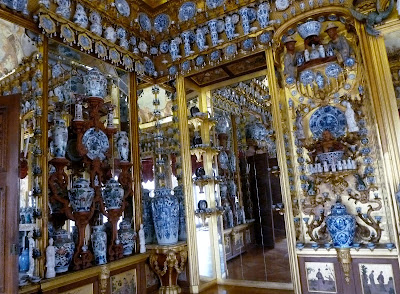 |
| A Friday morning sunrise over Weststadt at 05.40. |
Thursday was too hot all day, and at choir practise last night, we were all happy to stop half way through and drink a freshing beer, water or a cup of tea. Thursday night and Friday morning early were equally warm, and it was almost impossible to sleep well. I made a cuppa about 05.40, peered out from behind the blinds to see the sunrise over Weststadt, accompanied by a low level, white mist that covers parts of the fields. If it weren't so hot, I would find it a beautiful spectacle, but I muttered a few "Weather God expletives" under my breath, drank my tea and went back to sleep until 08.30.
The fields this year have grown hay and rape seed. The same fields last year grew mountains of beet, (for months I thought they were turnips,) and a few acres of cabbages out towards Weststadt. Last week in the middle of one field, two men and a women with a clip-board were examining the crop. This week the warm weather has cooperated with the need to harvest, and two massive Claas harvesters arrived in the field on Tuesday morning to gather in the crop. They have another day of good weather before the anticipated storms arrive tonight and Saturday morning. Thankfully it will be cooler, and my mild, heat induced headache will disappear.
 |
| Harvesting on Tuesday afternoon. |
This similar scene above on Wednesday morning, shows a dust of chaff blowing up from one of the yellow harvesters. The machine is the same colour as the crop, so is not easy to see. This Friday afternoon I'm out drinking tea, and when I return home this evening the whole field will be safely gathered in.
It has not been an easy week in this 30c/32c heat. I cannot take my usual daily walk across the open fields to the Weserstrasse tram station and I miss my daily exercise. On Tuesday in the heat, I caught up with a friend I hadn't seen for two months, Wednesday I walked in the Buerger Park with the English speaking walk group which consisted of just two of us, but in the shade beside the River Oker the walk was lovely. After a day in, I sang with the choir on Thursday evening, and after tea this afternoon, I might settle down to watch the opening ceremony of the London Olympic Games on Eurosport, although by 22.30 here, I might have fallen asleep in my reclining armchair. Fingers crossed for a successful games.















































